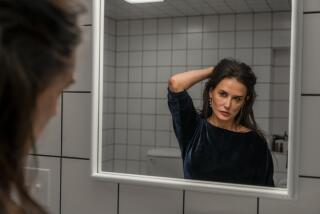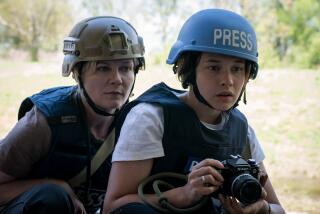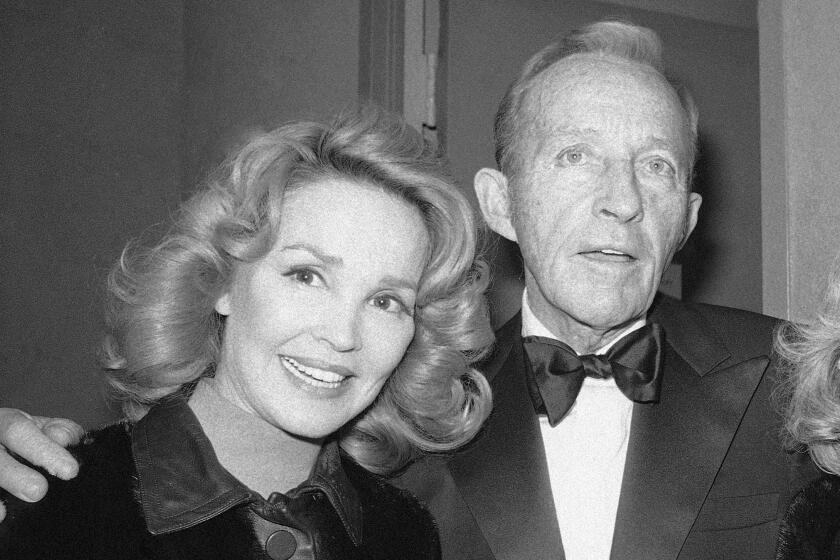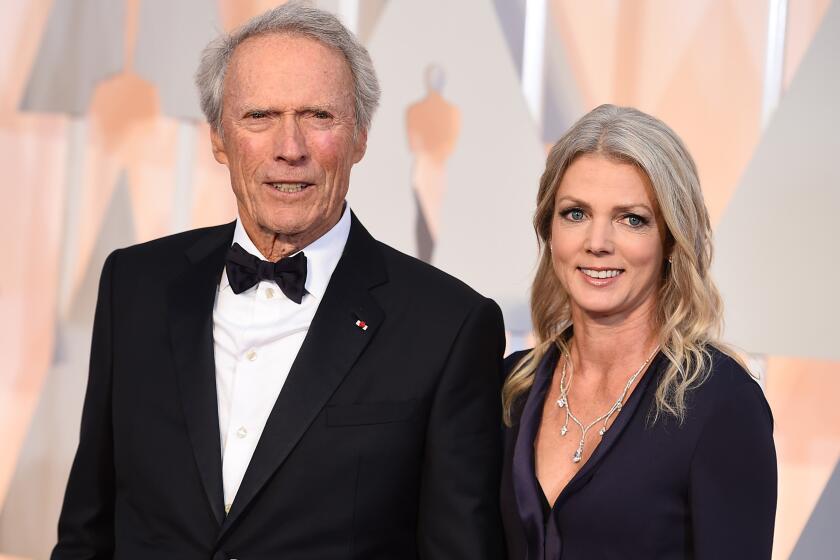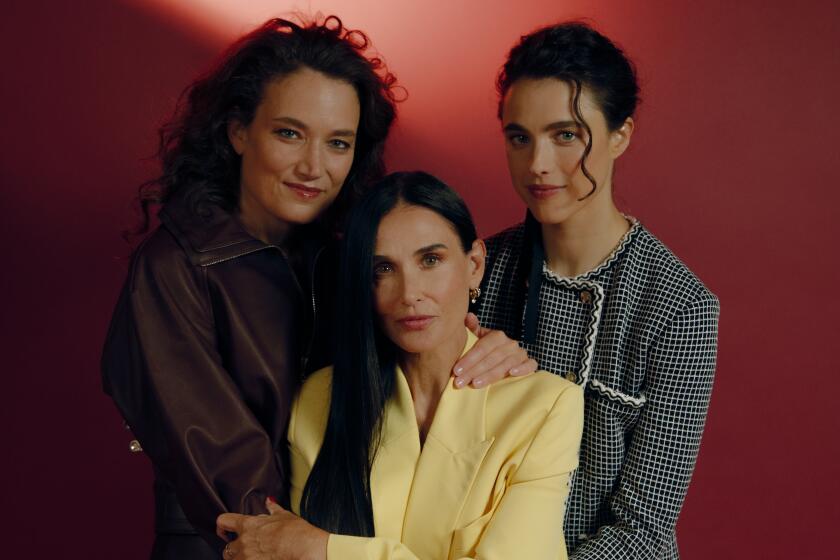Review: Late-in-life Errol Flynn leers in ‘The Last of Robin Hood’
Aging star with sagging ego, pliable young beauty eager to please, obsessive stage mother willing to facilitate — the tale in “The Last of Robin Hood” is as old as Hollywood itself.
In Errol Flynn’s not-so-grand finale, the spotlight that had dimmed began shining once again at word of his death in the arms of his weeping teenage lover. Ironic that he couldn’t bask in the attention he craved, but the tawdry romantic reveal was certainly worthy of a town more concerned with whitewashing the star’s womanizing reputation than the fate of the very young women he toyed with.
------------
FOR THE RECORD:
Errol Flynn: An Aug. 29 Calendar review of “The Last of Robin Hood” said the film catches up with its subject, Errol Flynn, as he is approaching 60. The film catches up with Flynn as he is approaching 50.
------------
The year was 1959. Flynn (Kevin Kline), the comely young Beverly (Dakota Fanning) and her grasping mother, Florence (Susan Sarandon), make up our unholy trinity. Though Flynn’s fortunes had faded from his heights as Sherwood Forest’s favorite antihero, Robin Hood, the actor’s death sent the tabloids scrambling to splash every scrap of information across their covers.
The film sets the mood with a sea of flashing bulbs and shouted questions as a devastated Beverly makes her way down the steps of the plane that returned her to Hollywood. In the face of the chaos, she faints before saying a word. Unanswered is whether it was the reporters that sent the 17-year-old into a swoon or the sight of her mother amid the journalists, wildly waving and calling her name.
Perhaps that is in part what makes the film such uncomfortable watching, the way it echoes modern-day celebrity train wrecks, from the alcohol and drug abuse to sex with minors. Years pass, names change, the news cycle speeds up with Gawker, BuzzFeed and the online rest disseminating the latest lurid details 24/7. Fame, however, remains as irresistible as ever, the public as insatiable.
That might suggest a more insightful film than writer-director team Richard Glatzer and Wash Westmoreland have given us. Instead of a cautionary tale, they’ve looked at Flynn’s life through rose-colored glasses. The actor is made out to be a cad, to be sure, but in that arrogantly charming forgivable way. Fanning’s hopelessly devoted young Beverly is clever but not conniving. Hollywood is not even cast as a co-conspirator.
The villain is the mother. Sarandon plays the many disappointments of Florence’s life like a winning poker hand — starting with the accident that ended her career as a dancer and left her with a wooden leg and a sour mood. Her own hopes dashed, Florence’s focus became her child, grooming Beverly for stardom from the moment she could walk and talk. The film only alludes to those years, but Fanning is quite good at showing us the finished product; a pity she’s not allowed to show much else.
Just as Flynn is the star in this story, Kline is very much the star of this film. The actor, more often cast as likable and light, makes fairy-tale Flynn maleficent. Kline dances on the knife’s edge of impropriety with such ease that it makes the dissipated legend he portrays more magnetic than creepy, which should be taken as both praise and criticism.
By the time the film catches up with Flynn, he is approaching 60 and casing the studio lot for lovelies. Muted, nearly black-and-white tones from director of photography Michael Simmonds serve as reminders that this is the 1950s, and the way the aging star is shot peeking through his office blinds has a promising “sex, lies, and videotape” quality. But it soon piles up in a forgotten corner alongside the mention of the actor’s statutory rape charges and other random hints that there might actually be something terribly sinister going on.
Crisp, cool and beautiful, Beverly catches his eye. In short order, Flynn wines, dines and deflowers her. Suddenly, he can’t live without Woodsy, as he dubs her not long after they’ve met. She reminds him of a wood nymph, he says, as if their indiscretion would not count if she were some magical creature not bound by earthly rules of decorum, or under-age laws.
The rest of the film essentially argues that theirs was a true romance. That it was love that led Flynn to walk away from “Lolita” when director Stanley Kubrick refused to cast Beverly in the title role. That it was the star’s belief in her talent and pressure from Florence that led him to make the dreadful “Cuban Rebel Girls” starring Beverly. That their age difference wasn’t quite so bad since Flynn thought the girl 18, not 15, when they met, and Florence cops to forging papers so her daughter could get work at the studios.
It’s not long before the film’s procedural pacing begins to overshadow the emotion. In fact, a good deal of “The Last of Robin Hood” is spent building the case against Florence. She was certainly one of the guilty parties, facilitating her daughter’s relationship, selling Flynn’s story after his death, losing custody of Beverly.
And what of the movie star’s guilt? There is a scene deep in the film that catches one of Florence and Flynn’s late-night conversations. As if to convince herself, she is recounting the actor’s virtues, his concern for Beverly’s career suggests a good man with good intentions. With a weary smile, Flynn allows he is nothing of the sort. That Errol Flynn would have been interesting. But the curtain never lifts, the wizard’s true nature is never revealed, and you can’t help wondering where “The Last of Robin Hood” left its moral compass.
Twitter: @BetsySharkey
More to Read
Only good movies
Get the Indie Focus newsletter, Mark Olsen's weekly guide to the world of cinema.
You may occasionally receive promotional content from the Los Angeles Times.

